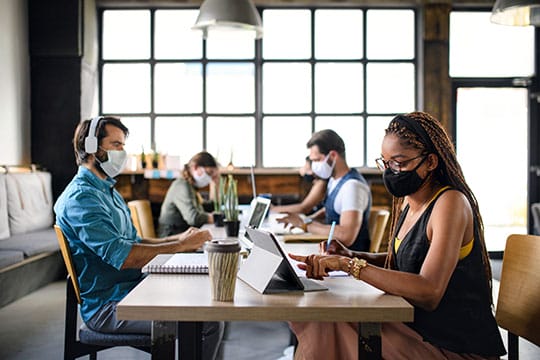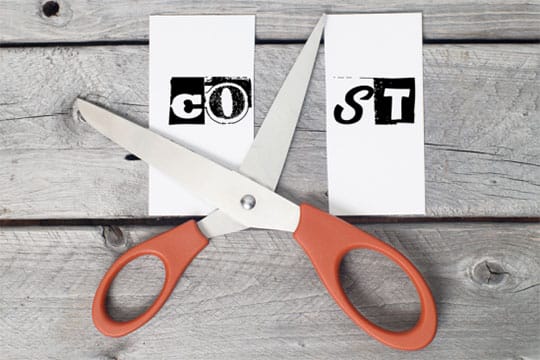COVID-19 has forced businesses to shift and adapt. The measures that the pandemic has brought include lock-down and social distancing, both of which directly impact businesses. It is important to adapt to these measures to make sure that your business stays afloat and safe. Here are 6 tips to help your business to thrive following COVID-19.
Go Digital

Lockdown and social distancing have meant that your consumers are spending more time at home than in shops. There are curfews that they need to abide by in hopes of curbing the spread of the virus. Many businesses have had to adapt to this change by making their service product available digitally.
Businesses in the health sector, for instance, have had to embrace the digital health conference as opposed to the pre-COVID-19 meetings which entailed traveling. Such an adaptation means that business doesn’t have to come to a complete halt. All involved simply have to accept the new dynamic of the conferences so that the sector continues to move forward.
When your business goes digital, you have to make sure that you provide a positive experience for both your workers and consumers. Understanding the technical dynamics of this new platform can be overwhelming, particularly for those who’ve never had to navigate these spaces before. Make sure to accommodate all by using secure platforms and interactive digital spaces.
Recommended for you: How Software & IT Businesses are Surviving in the COVID-19 Pandemic?
Implement Safety Measures

If your business is one that has to continue face-to-face interactions during the pandemic, then you should make sure that you implement the health and safety measures recommended by the WHO.
1. Social Distancing

You need to design your business space in such a way that facilitates social distancing for your team and consumers. Depending on your type of business, this can achieve through spacing out your seating plan, drawing markers on the floor to show customers where to form queues, implementing a staff rotation schedule so that there are a minimum number of workforces at a time, and ensuring quality ventilation, if you are indoors-based.
2. Mask Wearing

You can implement a rule where mask-wearing is mandatory for staff and consumers, as long as they are on your business premise. Masks help to curb the spread of the virus. These can protect others from catching the virus from those who may have it, through the covering of the nose and mouth. You can provide your workforce with quality masks and make it a rule that they need to have them on for the duration of their working hours. However, if people are exempt from the wearing of masks as some are, then this also must be complied with.
3. Hand Sanitizing

You can set up a sanitizing station by the entry. All those who wish to enter the premises will have the option of sanitizing their hands before doing so, and upon leaving; this will show customers that you are complying with the measures as dictated by your government, and they will feel safer shopping on your premises.
4. Temperature Checks

A high temperature is a symptom of the virus. Checking people’s temperature upon entrance is a safety precaution that may prevent your consumers and workers from catching the virus. If a person’s temperature is high, he or she will be unable to enter the premises, and the appropriate procedures regarding COVID-19 checks and reporting will be followed.
Reduce Overhead Costs

For your business to survive during the pandemic, you have to reduce your overhead costs. This means implementing different strategies depending on your type of business. Where your business used to operate 15 hours a day, you may need to cut that figure back to 10 hours, for example. If you utilize large amounts of electricity, you may need to figure out how you can cut down on this particular bill by switching off certain gadgets when they are not in use. Reducing your overhead costs requires intense analysis of the business, and a decision to do without certain functions while these cutbacks are necessary.
Market Your Products and Services with Coronavirus in Mind

COVID-19 has significantly affected every single life in the world. While some lost their jobs because of the pandemic, others were required to work remotely so that their employers can continue operating without compromising their own safety or that of the workers.
As a business owner, you must think about how the pandemic changed the lives of your target audience, and base your marketing efforts on this information. Even if vaccines for the virus are introduced to the general public, you can’t expect that everyone will immediately return to their pre-COVID-19 life.
Marketing is essential in every business, but for yours to successfully adapt following COVID-19, you have to be more conscious about your efforts. Listed below are some tips on how you can market your products and services with Coronavirus in mind:
1. Infuse Empathy into Your Marketing Efforts

The pandemic has been challenging for everyone, which is why selling products and services abruptly will make the general public think that you’re merely “taking advantage of the situation.” This will create a negative brand or image for your business, essentially shooing potential customers away from your doors.
If you don’t want this to happen, make sure that you infuse empathy into your marketing efforts. You can do this by presenting your products and services as entities that can improve a customer’s life during the pandemic. If your business involves selling foods, then inform your customers about the nutritional content of your products, and let them know how these can boost their immune system and perhaps help to protect them from the virus.
2. Avoid the Hard Sell and Reaffirm Your Commitment to Your Customers

Contrary to popular belief, hard selling isn’t the best way to market products, especially during a pandemic. In fact, it’s more ideal to avoid the hard sell and reaffirm your commitment to your customers instead.
Aside from letting your target audience know what you’re selling, your marketing campaign should also include messages that will put your customers’ minds at ease and let them know that you’ll be there to help them during these trying times.
You may like: 10 Successful Easter Market Campaigns for Small Business.
3. Embrace Digital Marketing

Because of COVID-19, people around the world are expected to stay indoors, which means that your billboard ads and flyers posted around cities won’t be nearly as effective.
For your business to remain visible during the pandemic, learn how to embrace digital marketing, and maximize this platform in advertising your products and services. Since people are now spending more time indoors, digital marketing campaigns have a much better chance of reaching your target audience than other forms.
Depending on your budget, you should start embracing digital marketing campaigns by using paid ads in Google, Facebook, or YouTube, or combining Search Engine Optimization – or SEO – with content marketing. Optimizing your website for mobile-first browsing and having a visible presence on different social media platforms will also help greatly.
Discount Your Prices

Keep in mind that just as your business has been affected by COVID-19, so have your consumers. Some have been furloughed, or have had to make cuts in their paychecks. For you to retain most of your consumers and to somewhat break even, you may need to revise your service product prices. If your competition reduces its prices, you will end up losing business to them. Make sure to research the market to price accordingly.
Motivate Your Workforce

The changes to your business will affect your workforce. Some may have to adapt to a cut in salary, while others will be forced to work from home. Adapting and settling can take time; however, if you motivate your workforce then your business will have a much better chance of thriving.
You should train your workforce in the new strategies and procedures that you have implemented. For example, if your workers are all working remotely then you need to set up an online training schedule, through which you can explain how the different tools they’ll be using work. They should be able to ask you questions and watch you demonstrate so that they grasp the technical skills so suddenly required of them. Technical confusion and frustration or a feeling of a lack of support can lead to a demotivated workforce, resulting in poor productivity.
Remain Optimistic

It’s easy to see the negative in the current situation, particularly when you listen to the conversations around you and the news. The infection and death figures appear to be on the rise globally. This may naturally make you wonder if your business will survive the lockdowns and social distancing, considering the fear factor that it strikes among your customer base. It’s important to remain optimistic. If you give in to the uncertainty of the pandemic, your business could become extinct. All keeping afloat means is that your business will still be in the game when the worst is over.
You may also like: How the Prosperity of Business Depends on Enterprise Application Integration?
Conclusion

Your business has to adapt to the different dynamics which have resulted from the attack of COVID-19. Some of the strategies that you can implement include going digital, implementing health and safety measures, discounting your prices, constantly motivating your workforce, and remaining optimistic. The world as we knew it is no longer the same and holds uncertainties for the future. Staying afloat as a business will take determination, an open mind, flexibility, and patience.





